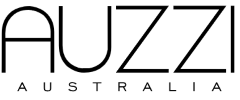Maximizing Efficiency and Effectiveness by Revolutionizing Service Management with ITIL V4
The ITIL (Information Technology Infrastructure Library) framework for IT service management is extensively used. Organizations all across the world have embraced it to manage their IT services, enhance operations, and match IT with business requirements. The most recent version of the framework, ITIL V4, was released in 2019. The framework has been changing throughout time.
It is clear that with ITIL V4, the emphasis has shifted from procedures to practices, with a focus on collaboration, agility, and continuous development. This change is in reaction to the evolving business environment, where firms must overcome unheard-of obstacles to provide consumers with value while keeping up with technological improvements.
IT service management has long utilized the Information Technology Infrastructure Library, sometimes known as ITIL, as a model. The environment for service management has, however, undergone major changes as a result of the publication of ITIL V4. Some of the ways that ITIL V4 has spurred this transformation include the following:
- A shift towards Service Value System (SVS)
Processes were at the core of the conventional service management strategy, but ITIL V4 stresses that they are only a means to a goal. The SVS method acknowledges that services are produced and delivered through a complicated and interrelated system of individuals, organizations, groups, institutions, routines, procedures, assets, and data.
By employing the SVS strategy to match their service offerings to the requirements and expectations of their consumers, businesses can concentrate on providing value to their clients. With this customer-centered strategy, businesses may readily adapt to their consumers' changing needs.
- Integration with Agile, DevOps, and Lean
ITIL V4 has integrated Agile, DevOps, and Lean methodologies into its service management framework. This integration has enabled companies to provide faster and more efficient services by adopting the best practices from these methodologies. The Agile methodology focuses on flexibility and responsiveness, while DevOps emphasizes collaboration between development and operations teams. Lean methodology, on the other hand, emphasizes the elimination of waste and optimization processes
- Emphasis On Business Value and Outcomes
This shift in focus has helped organizations to better align their services with the needs and goals of their customers. With ITIL V4, businesses are encouraged to consider the benefits and outcomes they hope to achieve from the services they provide. This approach helps organizations identify the most critical services and prioritize their resources accordingly. By focusing on delivering business value, ITIL V4 enables organizations to create services that are more closely aligned with their customers' needs, resulting in increased customer satisfaction and a better overall experience.
- Focus on Continual Improvement
ITIL V4 focuses on the continual improvement of services to meet customer needs. This is done through regular evaluation and feedback from customers, stakeholders, and employees. With ITIL V4, organizations can identify areas for improvement and implement changes to achieve better outcomes. The focus on continual improvement ensures that the organization is constantly evolving to meet changing customer needs.
- Greater Flexibility and Scalability
ITIL V4 offers greater flexibility and scalability. Its modular structure allows organizations to customize their service management approach to meet their unique needs. This means that ITIL V4 can be applied to businesses of any size or industry, providing a more inclusive approach to service management. The framework is also designed to be scalable, meaning it can be adapted as organizations grow or change.

